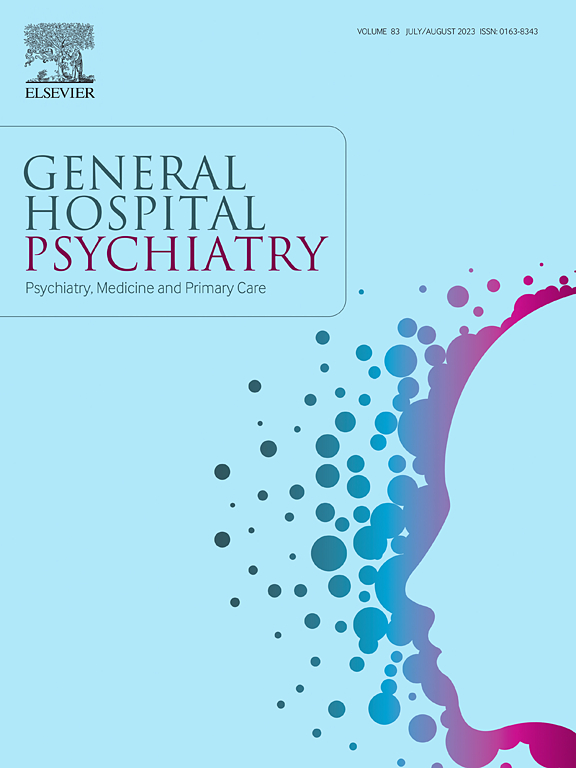Association between systemic inflammatory markers and depression: A meta-analysis
IF 3.7
2区 医学
Q1 PSYCHIATRY
引用次数: 0
Abstract
Background
Many studies have evaluated possible associations between the SII, NLR, SIRI, AISI, NLPR with depression, but the results remain controversial.
Objective
To determine the association between levels of the systemic inflammatory markers and the prevalence of depression.
Methods
Databases like Web of Science, PubMed, Cochrane Library, and EMBASE were searched for relevant studies. Differences in SII, NLR, SIRI, AISI, and NLPR levels between depressed patients and controls were assessed using OR, SMD, and 95 % CI. Subgroup and sensitivity analyses explored heterogeneity based on diagnostic criteria, region, study design, gender, and underlying disease. A meta-analysis was also performed to evaluate the diagnostic effectiveness of inflammatory markers for depression.
Results
A total of 41 studies with 205,438 participants were analyzed. Depressed subjects showed significantly higher NLR (SMD = 0.35, 95 % CI [0.17, 0.53], P < 0.001) and SII (OR = 1.38, 95 % CI [1.15, 1.65], P < 0.001) than controls. Subgroup analyses suggested that diagnostic criteria, study design, and country influence the association. Meta-analysis showed that NLR was effective in diagnosing depression (AUC = 0.70, 95 % CI [0.66, 0.74]), whereas SII was less effective (AUC = 0.37, 95 % CI [0.33, 0.41]).
Conclusions
This study supports the hypothesis that inflammation is associated with depression and that NLR and SII can be a potential predictor, but there are fewer studies related to SIRI, AISI, and NLPR, and further research is needed.
系统性炎症标志物与抑郁症之间的关系:一项荟萃分析
许多研究已经评估了SII、NLR、SIRI、AISI、NLPR与抑郁症之间的可能关联,但结果仍存在争议。目的探讨全身性炎症标志物水平与抑郁症患病率的关系。方法检索Web of Science、PubMed、Cochrane Library、EMBASE等数据库进行相关研究。使用OR、SMD和95% CI评估抑郁症患者和对照组之间SII、NLR、SIRI、AISI和NLPR水平的差异。亚组和敏感性分析探讨了基于诊断标准、地区、研究设计、性别和潜在疾病的异质性。还进行了一项荟萃分析,以评估炎症标志物对抑郁症的诊断有效性。结果共纳入41项研究,共纳入205,438名受试者。抑郁组NLR显著高于抑郁组(SMD = 0.35, 95% CI [0.17, 0.53], P <;0.001)和他们(OR = 1.38, 95% CI [1.15, 1.65], P & lt;0.001)。亚组分析表明,诊断标准、研究设计和国家会影响这种关联。荟萃分析显示,NLR对抑郁症的诊断有效(AUC = 0.70, 95% CI[0.66, 0.74]),而SII的诊断效果较差(AUC = 0.37, 95% CI[0.33, 0.41])。本研究支持炎症与抑郁相关的假设,NLR和SII可能是一个潜在的预测因子,但与SIRI、AISI和NLPR相关的研究较少,需要进一步的研究。
本文章由计算机程序翻译,如有差异,请以英文原文为准。
求助全文
约1分钟内获得全文
求助全文
来源期刊

General hospital psychiatry
医学-精神病学
CiteScore
9.60
自引率
2.90%
发文量
125
审稿时长
20 days
期刊介绍:
General Hospital Psychiatry explores the many linkages among psychiatry, medicine, and primary care. In emphasizing a biopsychosocial approach to illness and health, the journal provides a forum for professionals with clinical, academic, and research interests in psychiatry''s role in the mainstream of medicine.
 求助内容:
求助内容: 应助结果提醒方式:
应助结果提醒方式:


